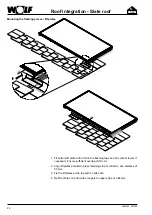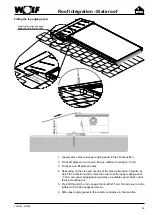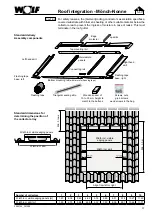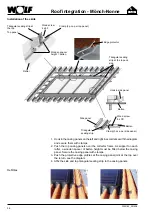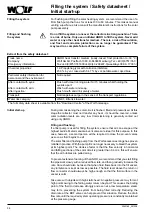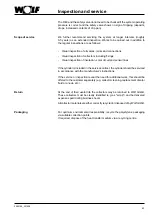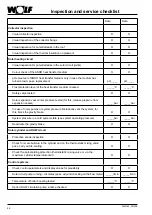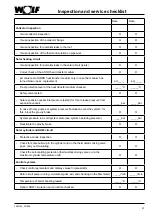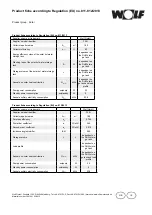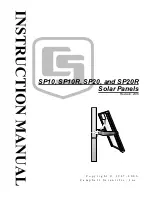
42
3062165_201508
Operation / Inspection and service
- A vapour film can appear particularly in the early hours of the morning due
to the temperature differential between the outside air and the collector. It
will disappear as the collector heats up.
- Where possible avoid switching off the power during solar irradiation.
If vapour forms during very high solar yield, the system starts again
automatically after it has cooled down.
- The overheating protection function in the control unit does not need to be
switched on for flat-plate collectors.
- No special measures are required for times when no hot water is required,
i.e. during holidays.
- Ask your local contractor to inspect the system when the system pressure
fluctuates severely or the ANRO heat transfer medium has been expelled
from the safety valve.
Have your solar thermal system regularly checked by a specialist contractor to
ensure long-term operational reliability and to maintain efficiency. Depending on
frequency and extent the checks are classed as inspection (annual) or service
(as required, usually every 3-5 years). An inspection and service contract is
recommended for all solar thermal systems.
We also recommend an extra inspection after the first few weeks of operation
to check the key functions of the system. This post-installation check or initial
inspection should be included as a component of the overall service package
for the system and can be itemised separately in the quote if required.
The main system parameters are recorded in an inspection and service report
to enable any problematic changes (e.g. system operating pressure or pH
value) to be detected. For the initial installation, refer to the data provided in the
system documentation (charge pressure, system operating pressure, controller
and pump settings, etc.).
The annual inspection should extend to at least the following (this also applies
to the initial inspection):
- Vent all ventilation points in the solar circuit
- Compare the system operating pressure with the set value (initial value if
initial inspection)
- Compare frost protection and pH value with their set values and the previous
year's values (initial value if initial inspection)
- Switch on pump, manually if necessary
- If a flow meter is installed: Compare flow rate with set value
- Check for fluctuations on the pressure gauge and flow meter (if applicable)
- Check for noises in the pump (air)
- Open and close gravity brake
- Check movement of the thermostatic mixing valve
- Check plausibility of controller (e.g. Tmax collector, Tmax cylinder, total
yield, etc.)
- Check plausibility as a function of solar radiation: flow and return temperatures
on thermometers - values displayed by the controller
- Document all settings and measured values
Operation
Inspection and service
Scope of inspection
Summary of Contents for TopSon F3-1
Page 51: ...51 3062165_201508 Notes...

